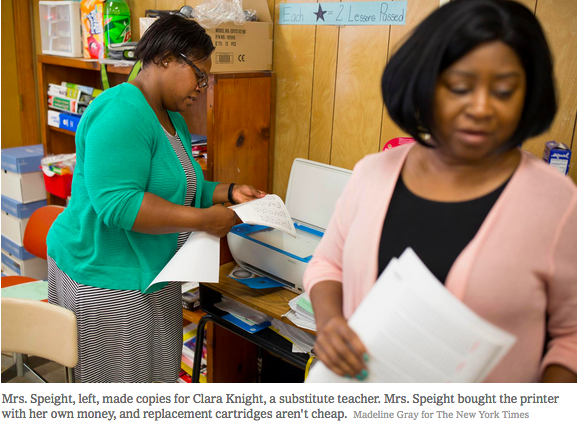At 7:50 on a recent morning, Preston Carraway greeted his third-grade teacher, Keshia Speight, who stood at the classroom door dispensing hugs. Mrs. Speight’s class has a motto, which everyone chants in the morning when she raises her fist: “Be brave! Be smart! Stay humble!”
That last point doesn’t seem like a stretch.
Preston, 8, goes to West Greene Elementary School in Snow Hill, a town of 1,500 in rural Greene County, N.C. Of the 100 counties in the state, Greene is one of the poorest. About four out of five public school students come from low-income families. Only three counties in North Carolina spend less on public education.
All around Preston were signs of how little money his district has. West Greene is one of many schools across the country dealing with the effects of funding cuts, from broken-down buses to donated supplies to teachers who work second jobs. In other North Carolina counties, and in five other states, teachers frustrated by these issues have walked out of their classrooms in recent months to protest state lawmakers.




